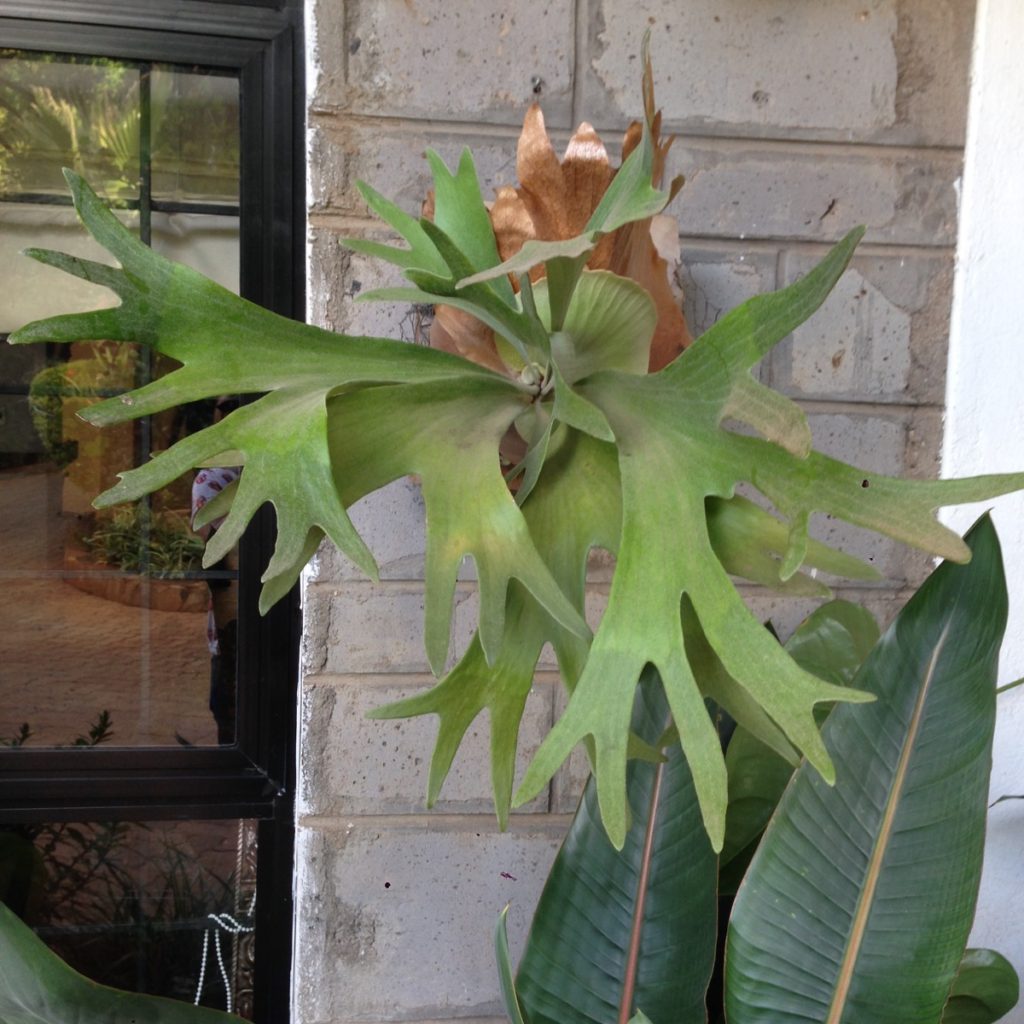
The title of this post should really be: That moment when you realise that all of your house plants in England are actually regular garden plants in tropical countries and really just want to romp away and become huge, exuberant specimens! But what would be far too long, and my WordPress blog interface would shout at me about ‘readability’ and ‘SEO’ and other such things I don’t fully understand.
I was on holiday in Kenya last month. It was amazing. It’s the place I grew up, and every time I go back there I’m filled with memories of a special and wonderful childhood, regret for a teenage/adult life that might-have-been, and a powerful, tugging sense of nostalgia for past times. My senses are overwhelmed, and I need time to process it all. It’s taken me a few weeks to get my head back in the game.
The first thing you’ll notice when you arrive in Nairobi is the colour of the soil. It is red and rich and silky. And insanely fertile! This is the land of tea and coffee-growing, after all. Even in highly developed areas of the city, plants grow away in every spare corner or patch of bare ground like they’re running on rocket fuel. It was the rainy season and the city was green and lush. Although some areas of Nairobi are now massively overdeveloped – especially places like Westlands, which used to be a pretty, sleepy little suburb when I lived there – most streets are thankfully still filled with huge trees, shrubs and climbers.
Gardens in the city tend to be used for growing food as well as ornamental plants. Nearly everyone has a ‘shamba’ – a kind of mini allotment. My cousin Tanuja’s house has a tiny but perfectly beautiful garden. In this small space she has fruit trees – avocado, guava, paw-paw, banana – and a passionfuit vine. This made for some delicious breakfasts! She has also made the most of every vertical space, with plants attached to walls and even tree trunks, hanging baskets and pots standing in every available space.
The result is that the garden filled with life. In the mornings, I woke up to see mousebirds comically scampering around the guava tree outside my bedroom window, so cute with their yellowish crests, white cheeks and long tails. Shimmering, iridescent sunbirds and brightly-coloured weaver birds came to the hanging feeders, seemingly without fear of the humans standing close by to watch them. And the bugs are huge, btw, all kinds of crazy shapes and colours!
Some of the plants that Tanuja has been growing in her Nairobi garden for years have recently become very popular as house plants in the UK – succulents, cacti, ferns and other ‘exotics’. It was fascinating to see them growing outside in a more natural and suitable climate. They were so much bigger than we can grow them here, indoors, and looked so happy and healthy.
It was sod’s law that my phone died in the airport on the way there – the battery swelled and I couldn’t get it fixed until the very end of the trip, so I have far fewer photos than I would have liked. Below are some photos of Tanuja’s stunning garden that I did manage to take on our last day.
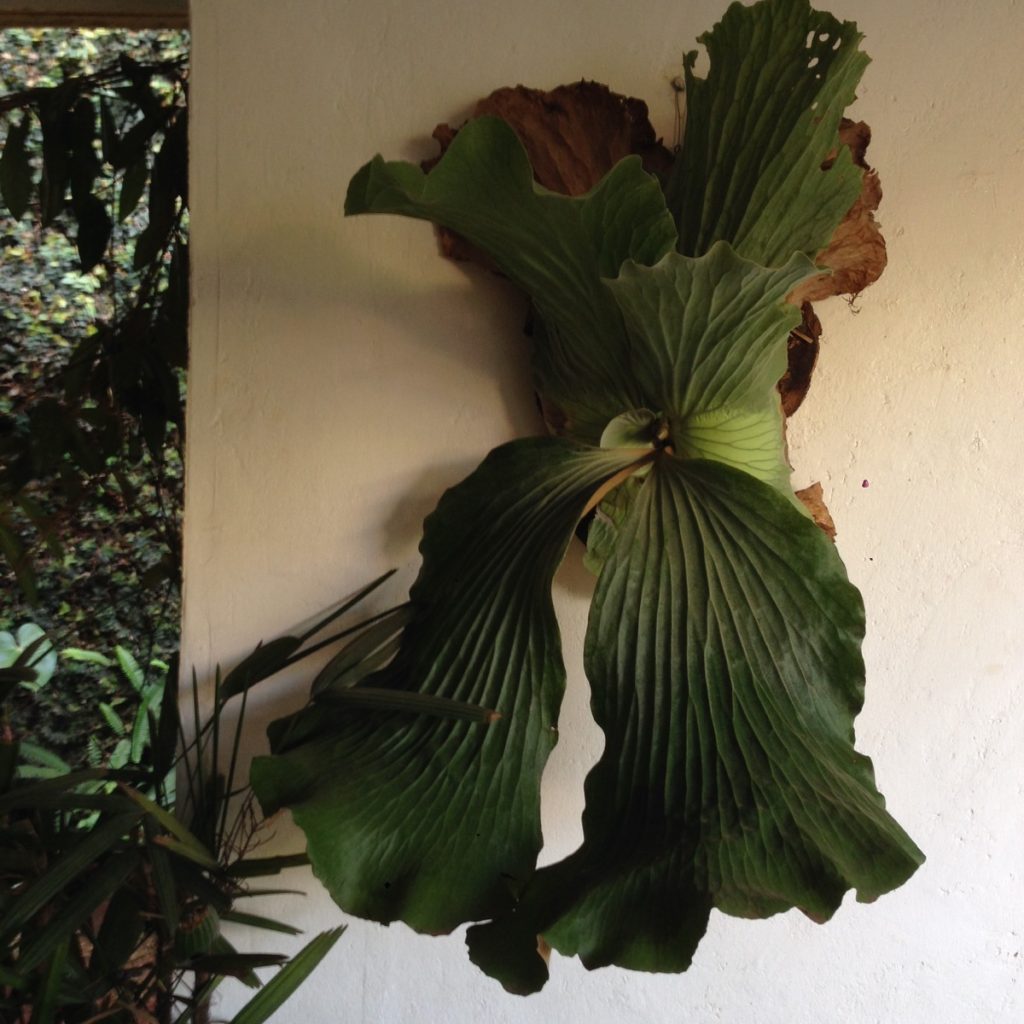
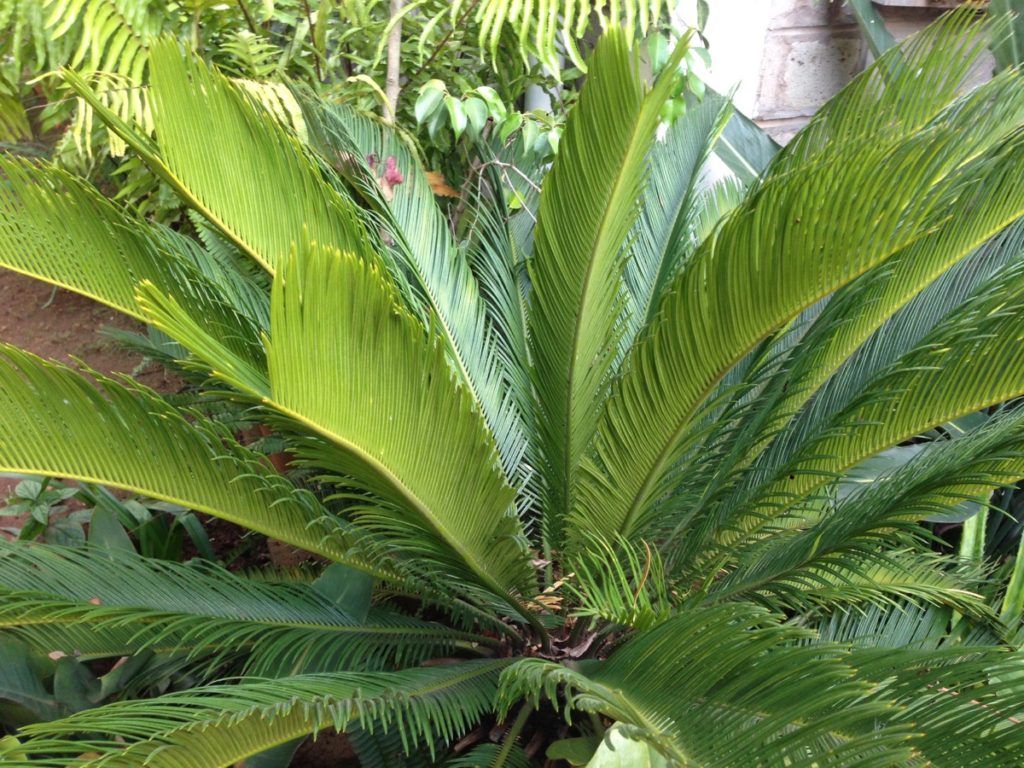
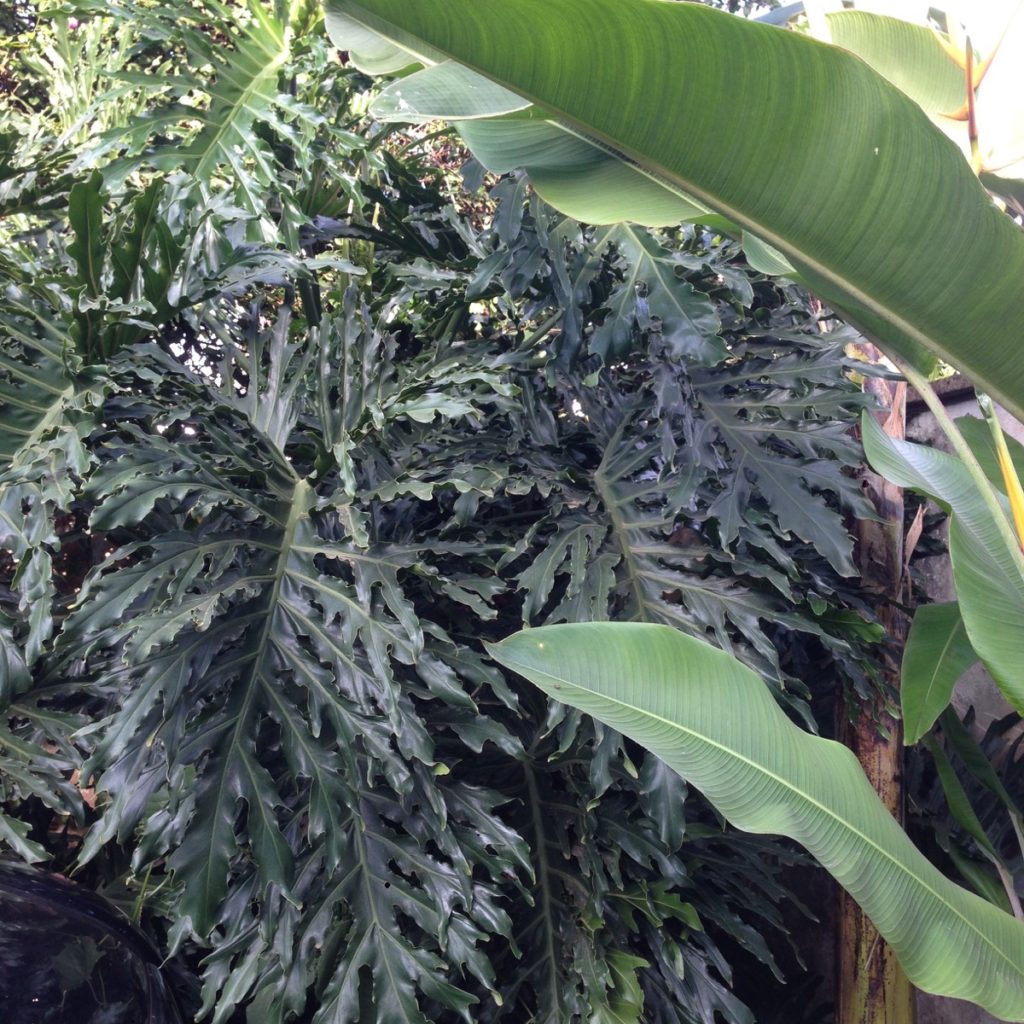

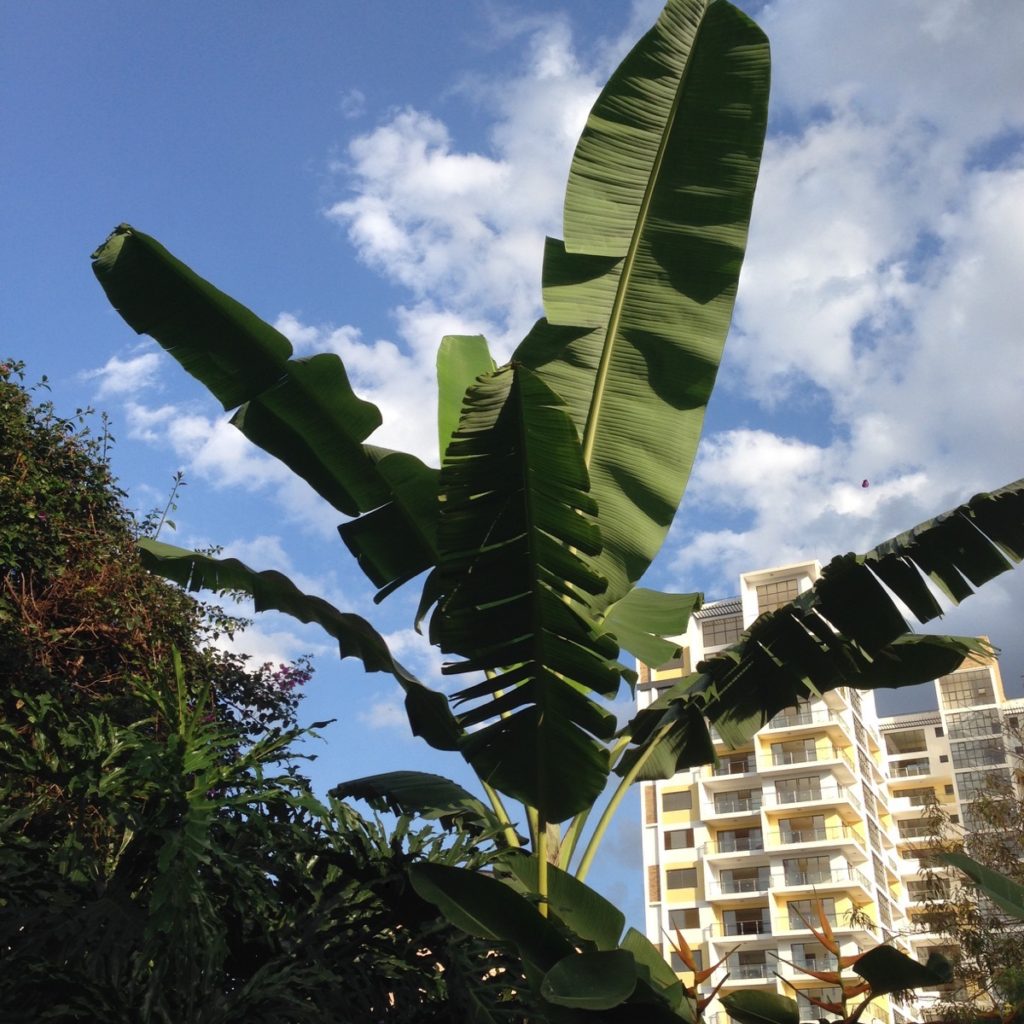
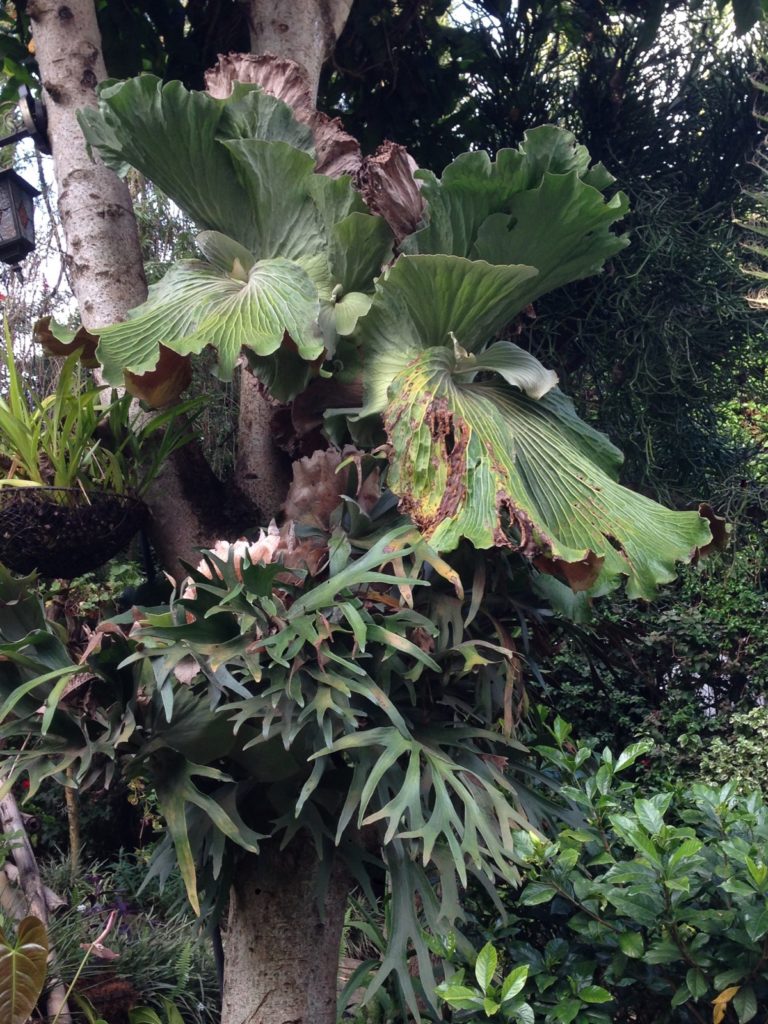
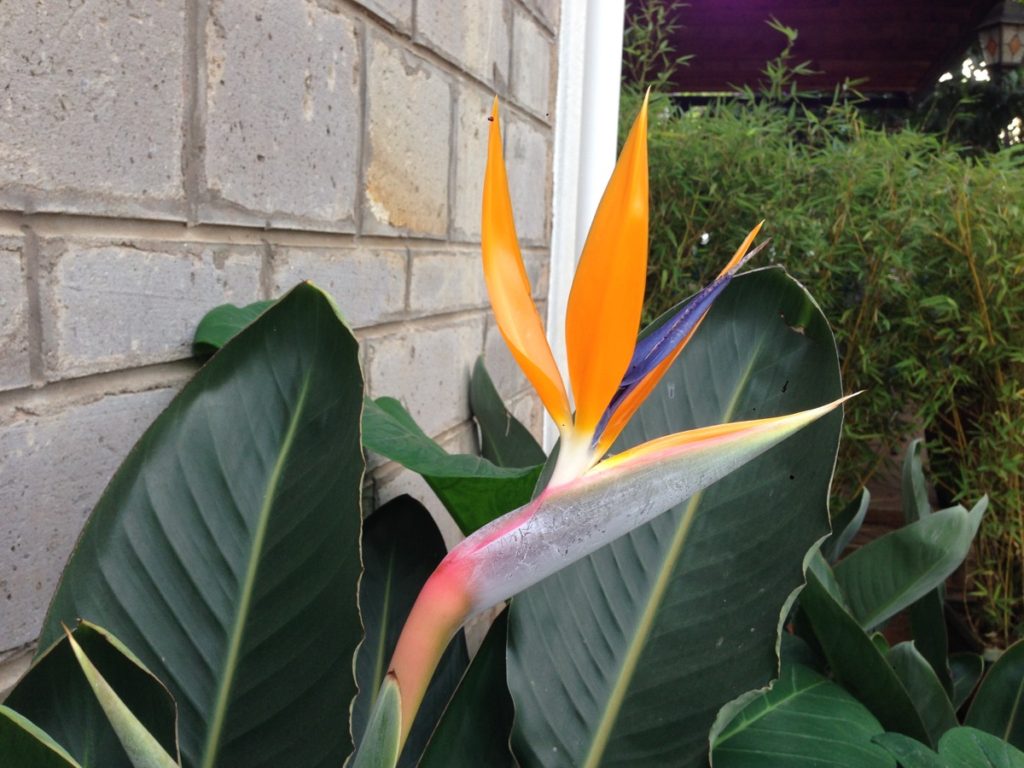
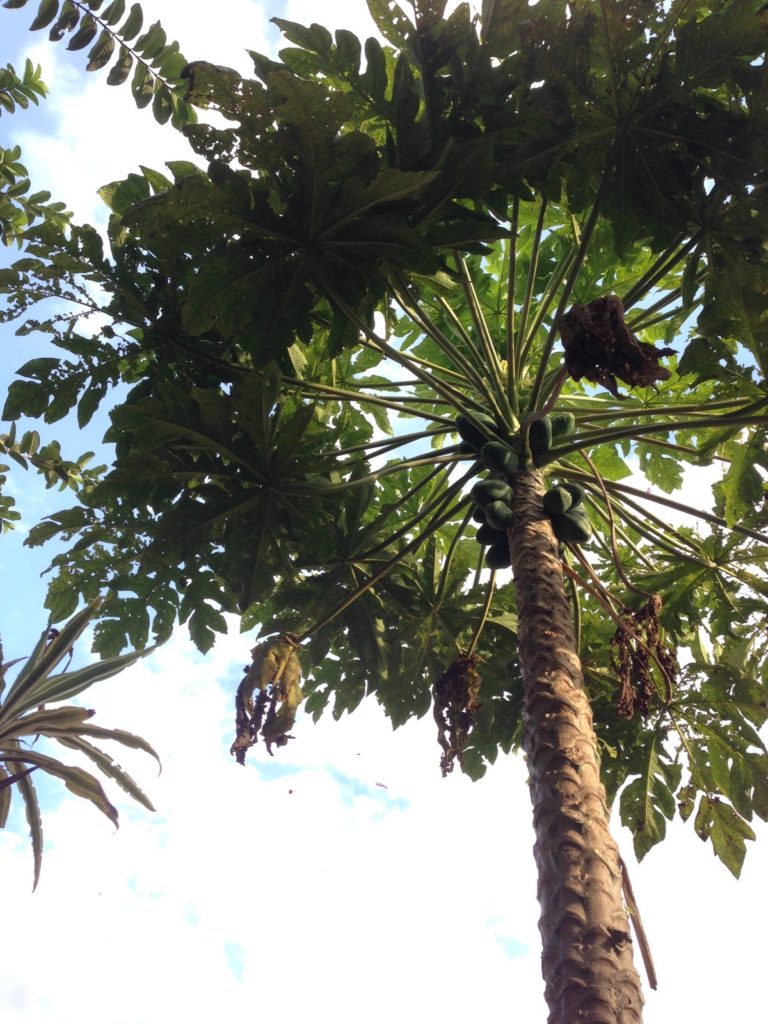
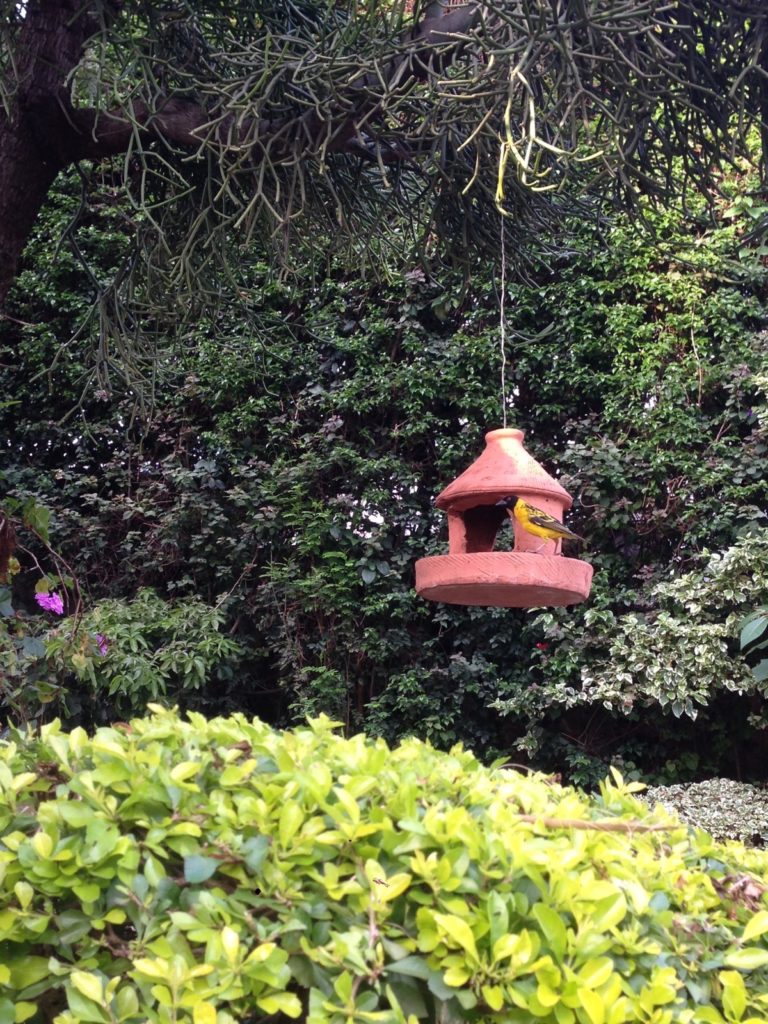
PHOTOS (top to bottom):
- Staghorn fern (header photo)
- Elkhorn fern
- Cycad palm
- Monstera – not sure which variety, but it’s not the usual house plant variety we see here (M. deliciosa)
- Banana ‘tree’ – it’s actually a herbaceous plant!
- Guava tree – ‘mpera’ in Swahili
- More epiphytic ferns
- Bird of Paradise (Strelitzia reginae)
- Paw paw tree – called papaya in England
- Weaver bird at the hanging feeder
I’d welcome any helpful plant IDs in the comments! It would be nice to know exactly what varieties these are, and I do love a Latin name.
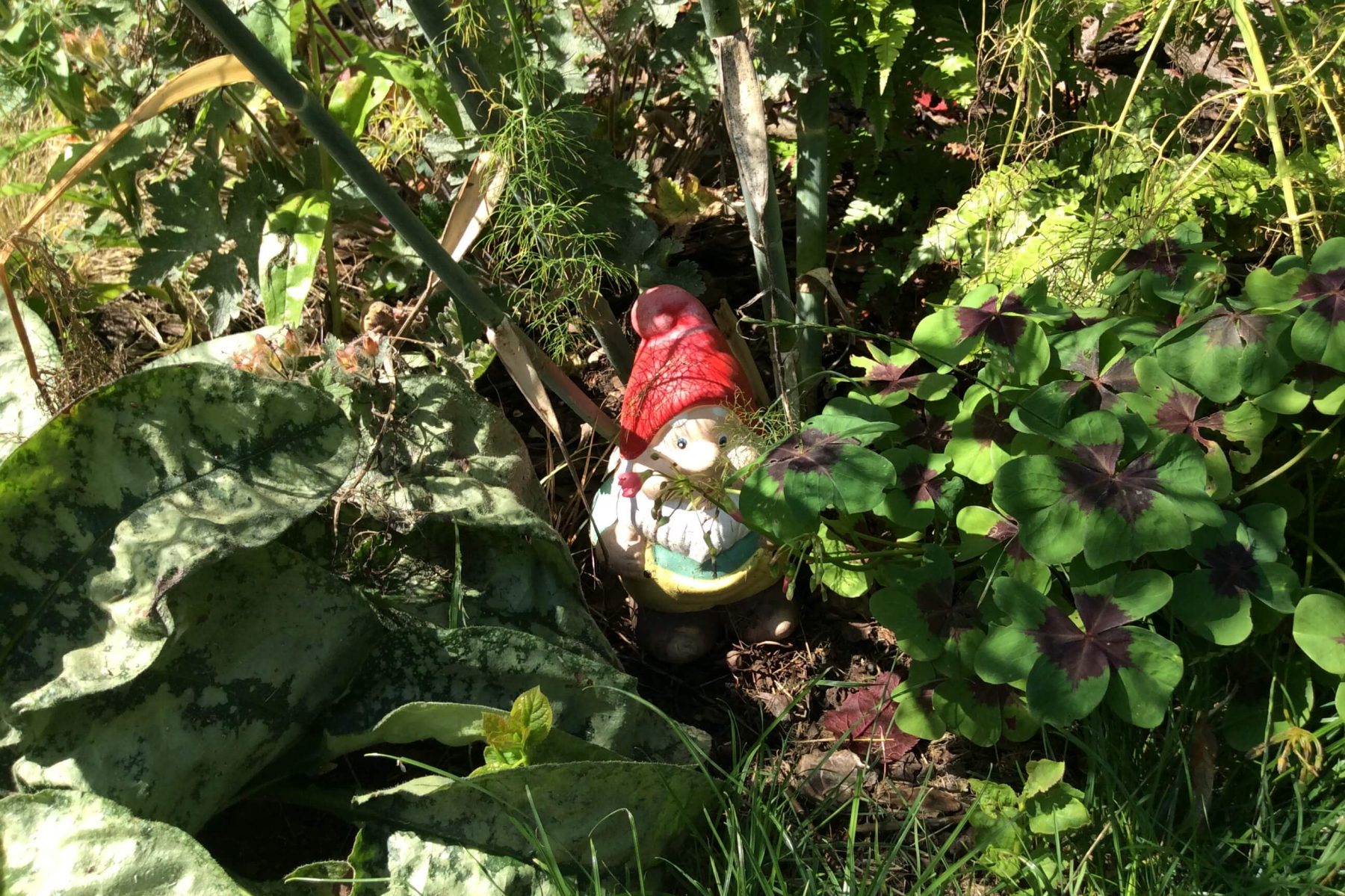
6 comments for “Gardens in Kenya :: When Houseplants Go Wild”